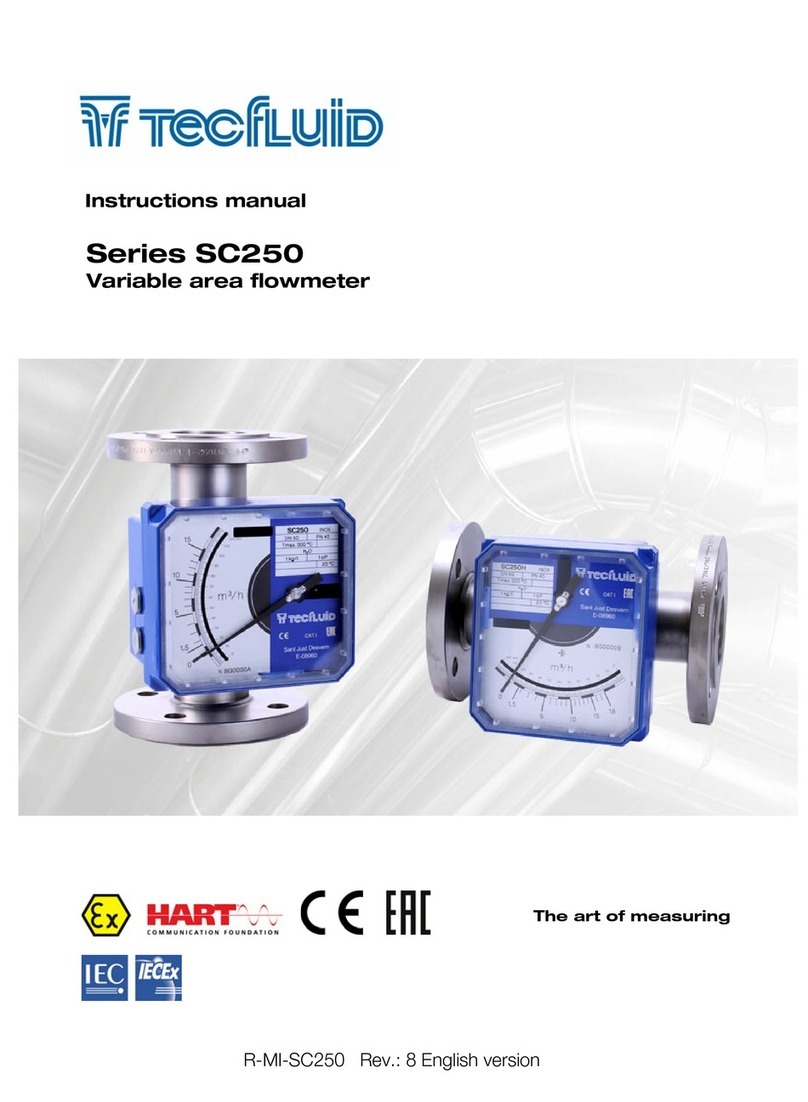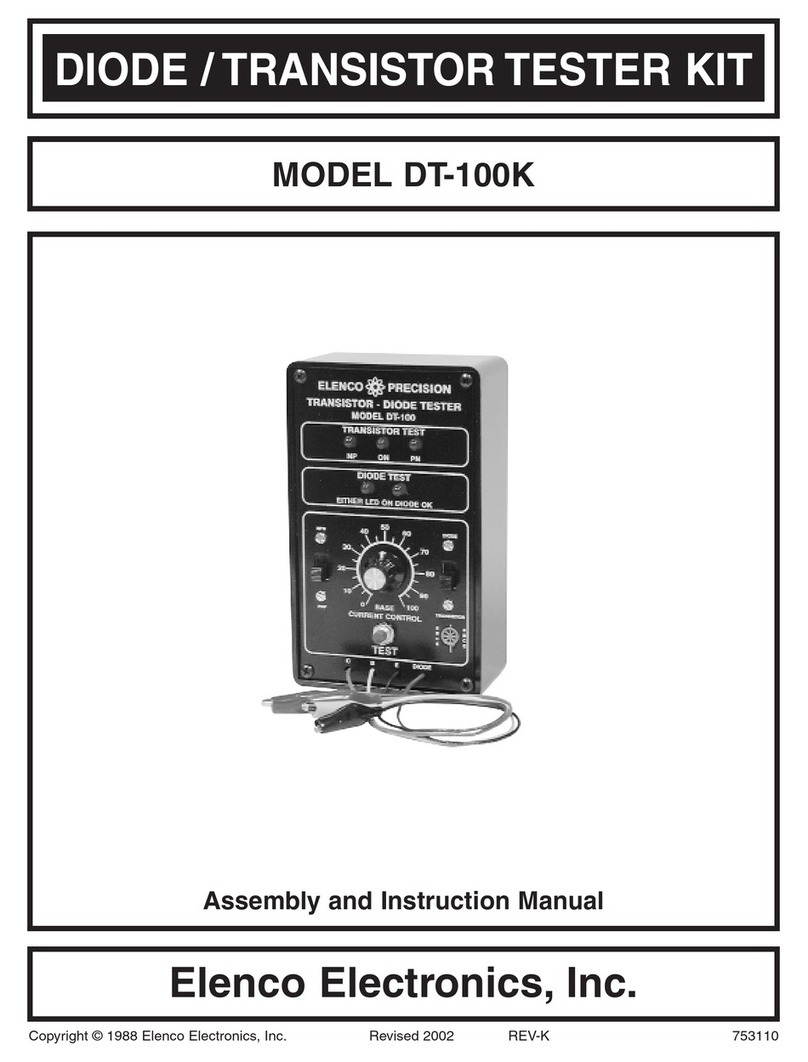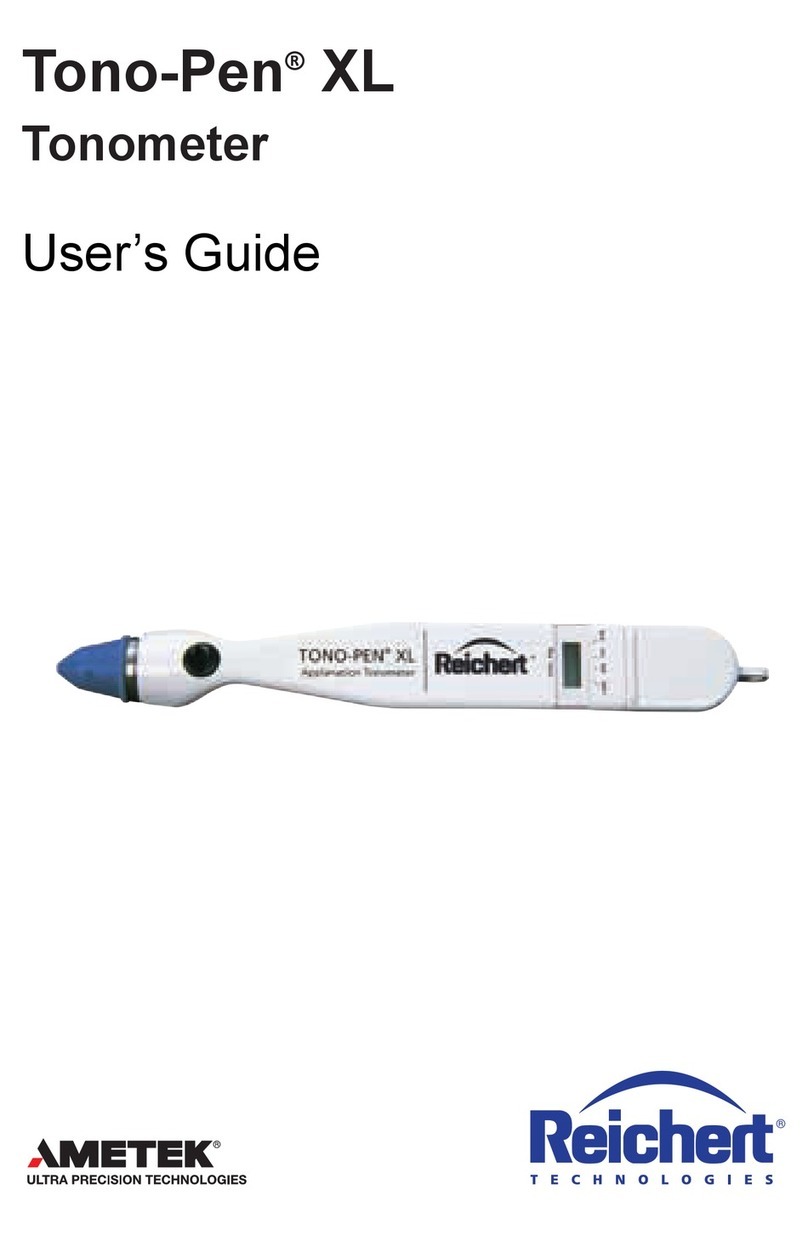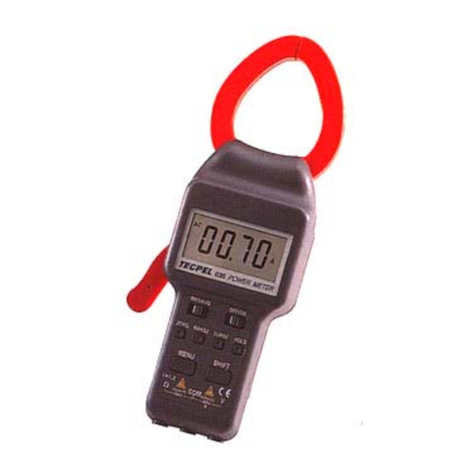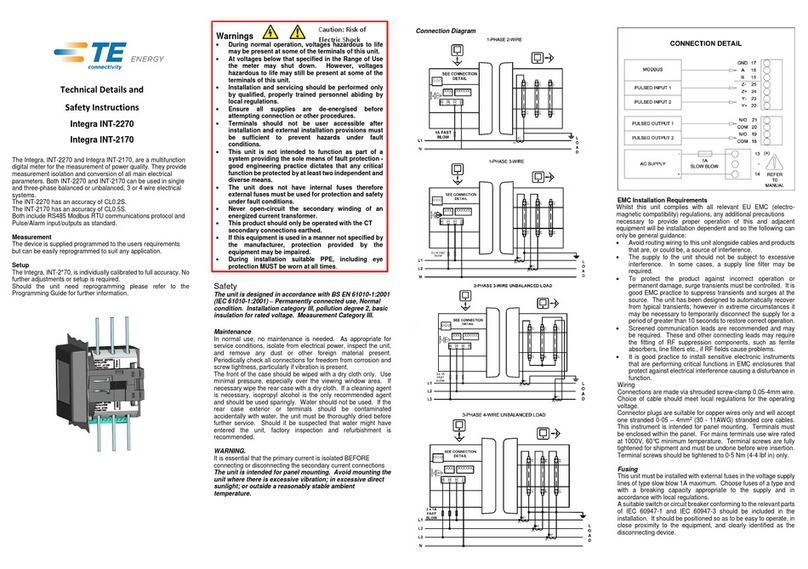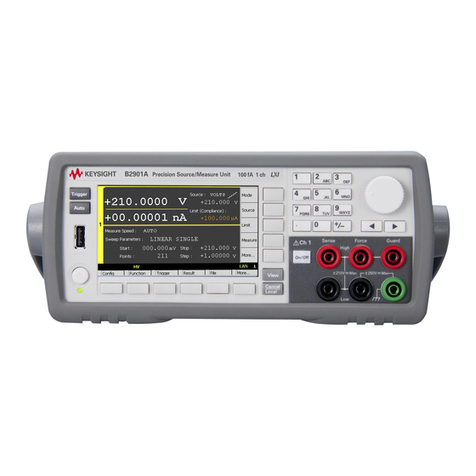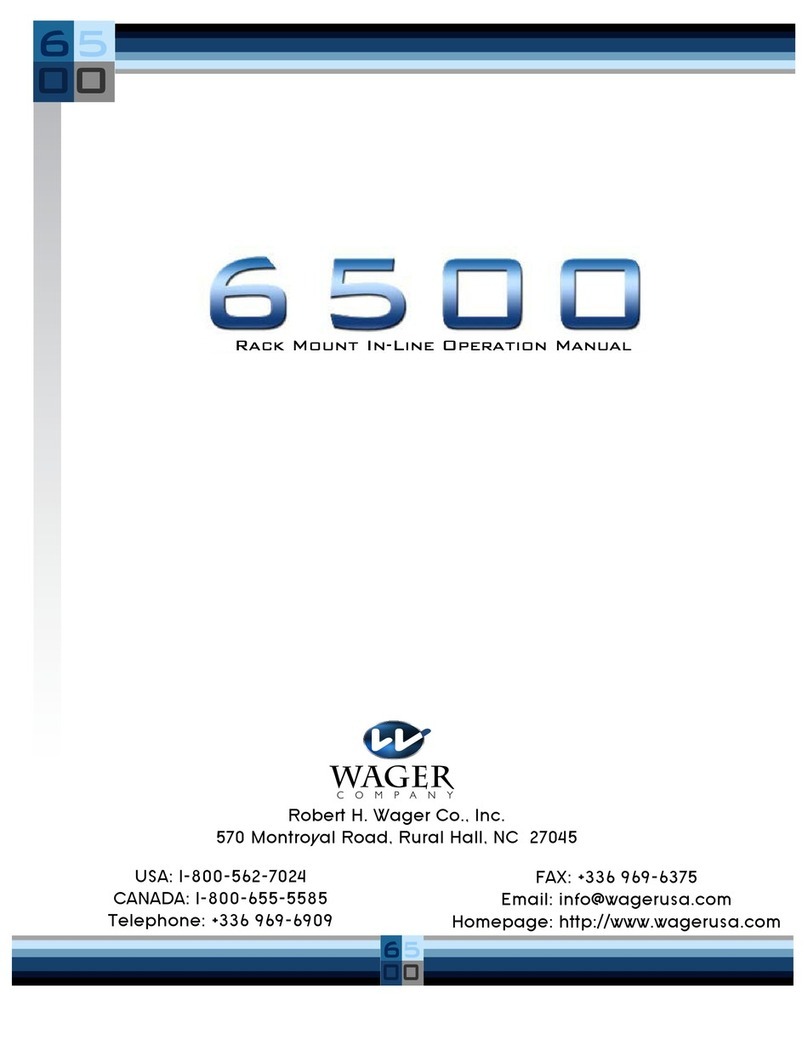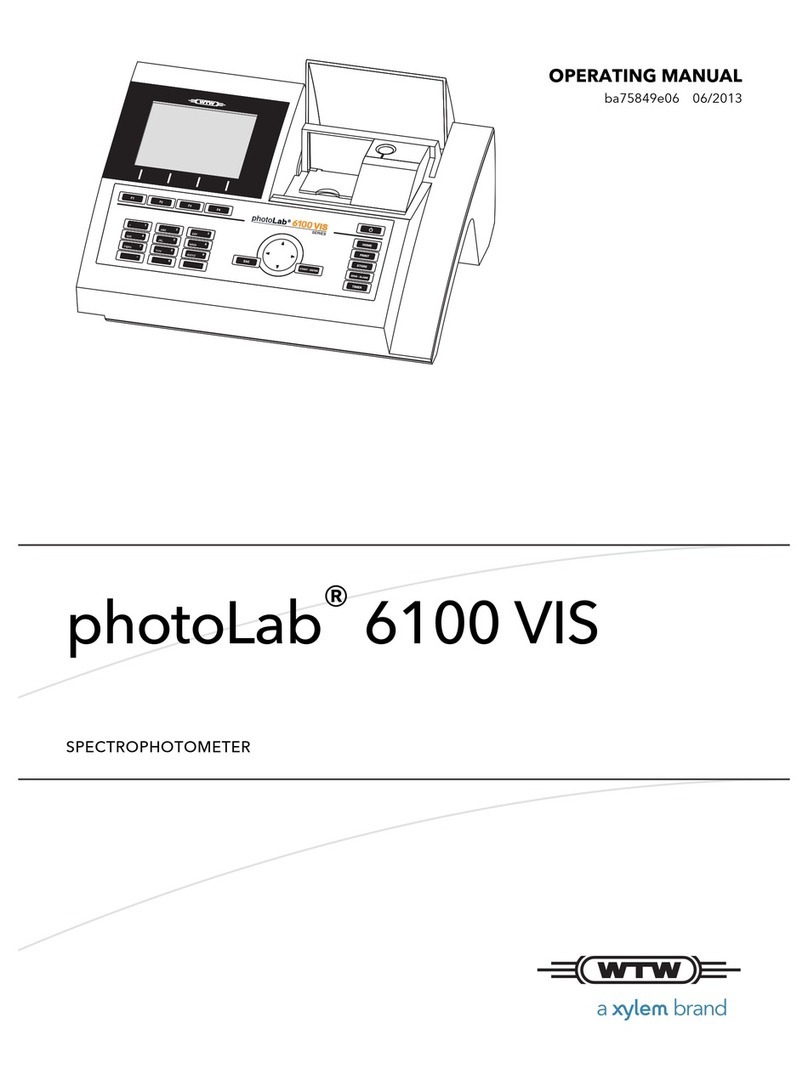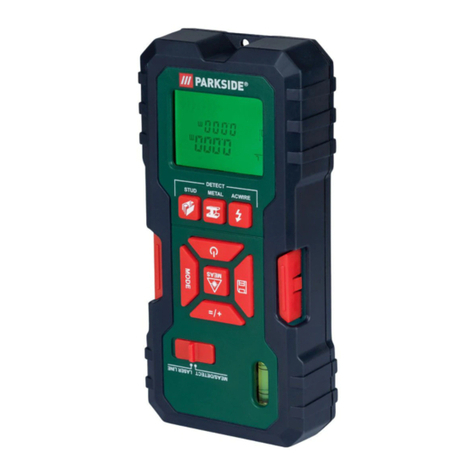Cholestech GDX User manual

Analyzer
User Manual
REF 12-656

Analyzer
User Manual
Refer to the CD in the analyzer package for instructions
in English. The instructions are available from your
local distributor.
Consulte el CD incluido en el envase del analizador
para obtener instrucciones en español. También puede
pedir las instrucciones a su distribuidor local.
Anweisungen auf Deutsch befinden sich auf der CD in
der Verpackung des Analysegeräts. Die Anleitung ist
von Ihrem Händler erhältlich.
Fare riferimento al CD nella confezione dell'analizzatore
per istruzioni in italiano. Le istruzioni sono disponibili
presso il distributore di zona.
Le CD contenu dans l'emballage de l'analyseur inclut
les directives d'utilisation en français. Le mode
d'emploi est disponible auprès du distributeur local.
Consulte o CD no pacote do analisador para instruções
em Português. As instruções estão disponíveis junto do
seu distribuidor local.
Der henvises til den vedlagte CD i analysatorpakken for
instruktioner på dansk. Instruktionerne fås hos den lokale
forhandler.
Se CD:n i analysatorförpackningen beträffande instruktioner
på svenska. Anvisningarna kan erhållas från en lokal
distributör.
Lue suomenkieliset ohjeet analysaattorin pakkauksessa
olevalta CD:ltä. Ohjeet ovat saatavissa paikalliselta
jälleenmyyjältä.
Türkçe talimat için analizör paketindeki CD’ye
bak›n›z. Talimat yerel da¤›t›c›n›zdan elde edilebilir.
∞Ó·ÙÚ¤ÍÙ ÛÙÔ CD ÛÙË Û˘Û΢·Û›· ÙÔ˘ ·Ó·Ï˘Ù‹ ÁÈ·
Ô‰ËÁ›Â˜ ÛÙ· ∂ÏÏËÓÈο. √È Ô‰ËÁ›Â˜ Â›Ó·È ‰È·ı¤ÛÈ̘ ·fi
ÙÔÓ ÙÔÈÎfi ‰È·ÓÔ̤· Û·˜.

TABLE OF CONTENTS
Cholestech GDX Analyzer User Manual
Table of Contents
General Information . . . . . . . . . . . . . . . . . . . . . . . . . . . . . . . . . . .1
Unpacking the Cholestech GDX Analyzer . . . . . . . . . . . . . . . . . . . .1
Storage Instructions . . . . . . . . . . . . . . . . . . . . . . . . . . . . . . . . . . .2
Features . . . . . . . . . . . . . . . . . . . . . . . . . . . . . . . . . . . . . . . . . . .2
Display . . . . . . . . . . . . . . . . . . . . . . . . . . . . . . . . . . . . . . . . . . . .3
Principles of the Cholestech GDX A1C Testing System . . . . . . . . . .4
Cholestech GDX Analyzer Basic Operation . . . . . . . . . . . . . . . . . . .5
To Run an Optics Check Cartridge . . . . . . . . . . . . . . . . . . . . . . . . .6
To Run a Cholestech GDX A1C Test . . . . . . . . . . . . . . . . . . . . . . . .8
Displaying Results in Memory . . . . . . . . . . . . . . . . . . . . . . . . . . . .8
Calibration . . . . . . . . . . . . . . . . . . . . . . . . . . . . . . . . . . . . . . . . . .8
To Use the 10 µL MiniPet™Pipette . . . . . . . . . . . . . . . . . . . . . . . .9
Performance Characteristics . . . . . . . . . . . . . . . . . . . . . . . . . . . .10
Troubleshooting . . . . . . . . . . . . . . . . . . . . . . . . . . . . . . . . . . . . .12
Contacting Technical Service . . . . . . . . . . . . . . . . . . . . . . . . . . .13
Safety . . . . . . . . . . . . . . . . . . . . . . . . . . . . . . . . . . . . . . . . . . . .14
Limitations of Use . . . . . . . . . . . . . . . . . . . . . . . . . . . . . . . . . . .14
Shutdown Information . . . . . . . . . . . . . . . . . . . . . . . . . . . . . . . . .15
Disposal . . . . . . . . . . . . . . . . . . . . . . . . . . . . . . . . . . . . . . . . . .15

1GENERAL INFORMATION / UNPACKING THE CHOLESTECH GDX ANALYZER
Cholestech GDX Analyzer User Manual
General Information
The Cholestech GDX Analyzer is a small, portable analyzer for use
with Cholestech GDX A1C Test Cartridges. The analyzer performs
a self-check before each test is run. You may also check that the
analyzer is working correctly by using the Cholestech GDX Optics
Check Cartridge and Cholestech GDX A1C Controls.
The Cholestech GDX Analyzer is powered by a 12-volt regulated DC
supply which is supplied with the analyzer. Never use any other
power supply transformer as this may give incorrect results or
permanently damage the analyzer.
This user manual will give general information about the performance
of the analyzer and test cartridge. You must also use the package
insert in each pack of Cholestech GDX A1C Test Cartridges.
Please keep this guide for future use.
TABLE OF CONTENTS
Cholestech GDX Analyzer User Manual
Table of Contents
Specification . . . . . . . . . . . . . . . . . . . . . . . . . . . . . . . . . . . . . . .16
References . . . . . . . . . . . . . . . . . . . . . . . . . . . . . . . . . . . . . . . .17
Unpacking the Cholestech GDX Analyzer
Carefully look at the outer box for any damage. If you see any
damage to the analyzer, please contact Cholestech Technical
Service or your local distributor.
Contents:
1 Cholestech GDX Analyzer
1 Power Supply Transformer and Plug for European Power Supply
1 Analyzer User Manual
1 Quick Reference Guide
1 Instructional CD-ROM
1 Insert CD-ROM
1 Warranty Card
1 10 µL MiniPet Pipette
50 Pipette Tips
1 Cholestech GDX Optics Check Cartridge (packaged separately)

3DISPLAY
Cholestech GDX Analyzer User Manual
2STORAGE INSTRUCTIONS / FEATURES
Cholestech GDX Analyzer User Manual
The Cholestech GDX Analyzer must be stored at a temperature
between 10 and 35ºC (50–95ºF). It is important to prevent dust and
dirt from getting into the analyzer. So keep the analyzer covered.
Make sure the Cholestech GDX Optics Check Cartridge is protected
from sunlight during storage. Store the Optics Check Cartridge at a
humidity of less than 60% and at a temperature between 15 – 25°C
(59° – 77°F).
Storage Instructions
Features
Enter Button
Left and Right
Arrows
Icon and Results Display
Power Connection
Positional Lights
Test Platen
Analyzer
Cartridge
Cartridge This icon will be used with “up” and “down”
arrow icons to prompt the user to insert or remove
a cartridge from the analyzer.
Hourglass This indicates that the operator must wait for an
action to be performed before proceeding. If a
number is displayed, it is a countdown timer.
Rotate Cartridge A single icon prompts the user to rotate the
cartridge. This will be used in conjunction with
flashing lights placed around the edge of the
cartridge to indicate the position to rotate to.
Error Message The number displayed is an error message.
Pour Solution A single icon to prompt the user to pour the
solution into the A1C Test Cartridge funnel.
Insert/Remove/Mix These two icons will be used in combination with
either the Cartridge icon or the Solution Tube icon
to prompt the user to perform an operation.
Keypad The keypad icons comprise “left” and “right”
arrows and “enter” button. They perform a function
when they are solid (as shown). When they are
present in outline only, they are not active, and
pressing them will not produce a response from
the analyzer.
Result The number displayed is the percentage of
hemoglobin HbA1c (A1C) in the test sample.
Blood Drop This icon will be used to prompt the user to take a
blood sample.
Identification Number The number displayed is the unique test
identification code.
Solution Tube This icon will be used along with the “up” and
“down” arrows to prompt the user either to remove
a tube or mix a blood sample in the tube.
Computer Connection A single icon to indicate a link-up with an external
device such as a printer or computer, shown
during download.
Display

5CHOLESTECH GDX ANALYZER BASIC OPERATION
Cholestech GDX Analyzer User Manual
4PRINCIPLES OF THE CHOLESTECH GDX A1C TESTING SYSTEM
Cholestech GDX Analyzer User Manual
Principles of the Cholestech GDX
A1C Testing System
The Cholestech GDX A1C Testing System uses boronate affinity
chromatography to separate the glycated hemoglobin fraction.
The Cholestech GDX Analyzer, which is a single wavelength
spectrophotometer (440 nms), measures both fractions and an
algorithm converts the result into the percentage A1C in the sample.
After a Cholestech GDX Test Cartridge has been placed in the analyzer,
a small sample of blood is added to the first sample tube. The blood is
instantly lysed to release the hemoglobin and the boronate affinity resin
binds the glycated hemoglobin. After a short incubation step, the liquid
is poured into the central funnel of the test cartridge and the non-
glycated fraction is collected in an optical chamber, where the
hemoglobin concentration is photometrically measured. A combination
of microswitches is used by the logic of the analyzer to detect the exact
position of a test or control cartridge during operation, and Dynamic
Meniscus Sensing (DMS) is used to detect when liquids enter the
cartridge reading wells.
The glycated hemoglobin remains bound to the boronate affinity
resin, which sits at the bottom of the test cartridge funnel. The
boronate affinity resin is then washed with the contents of the
second buffer tube and the final step is the elution of the glycated
hemoglobin off the boronate affinity resin using the third buffer
tube. The glycated hemoglobin concentration is measured and the
A1C concentration in the sample is calculated and reported by the
analyzer. The algorithm for the calculation is:
Where “M” and “C” are slope and intercept factors to correct the
value for DCCT calibration (see
Calibration,
page 8).
Cholestech GDX Analyzer Basic Operation
WARNING: When using the Cholestech GDX
Analyzer, do not operate within an
electromagnetic field. Do not operate any
VHF emitting equipment within 1 meter
(39.4 inches).
The Cholestech GDX Analyzer is designed
to be simple and easy to operate. This user
manual describes some basic functions, but
must be used with the package insert in each
pack of Cholestech GDX A1C Test Cartridges.
Please read this user manual carefully
before use.
1. Ensure the Analyzer is placed on a
flat surface. Operate the Analyzer
between 17 and 30ºC (63–86ºF).
2. Remove the power pack. Check that
the input power matches the local
voltage supplied. If the input voltage
does not match the local power supply,
contact Cholestech Technical Service
or your local distributor.
3. Plug the power pack into the main
supply. Connect the jack plug into the
back of the Analyzer indicated by the
following marking.
The analyzer will run through a check
stage. All the red positional indicator lights
on the analyzer will flash, the beep will
sound, and the display will show all icons
and characters momentarily.
A number will appear on the display. This is
the version of software in the analyzer, for
example 2.06.
The Hourglass icon will flash to tell you
to wait.
Note: The Hourglass icon may flash for
some time if the analyzer has been stored
at extreme temperature/humidity. Normally
the time required for warm-up is 10
minutes. If the analyzer has been moved
from a high or low temperature or humid
area just prior to warm-up, the warm-up
period may be extended to up to 40
minutes. If the analyzer fails to warm-up an
error message will appear on the display.
(See
Troubleshooting,
pages 12–13.)
When the analyzer is ready for use, the
Insert and Cartridge icons will flash. The
“left” and “right” arrows will be solid.
You can now use the analyzer to run
an Optics Check Cartridge or an A1C
Test Cartridge.
% A1C= M + C
A Glycated X 100
AGlycated + A Nonglycated

6 7TO RUN AN OPTICS CHECK CARTRIDGE
Cholestech GDX Analyzer User Manual
TO RUN AN OPTICS CHECK CARTRIDGE
Cholestech GDX Analyzer User Manual
7. Remove the cartridge.
• The analyzer will display the result:
e.g. .
Note: “ ” stands for Optics Check Cartridge.
8. Press the “enter”button to clear the
Optics Check Cartridge result.
Shelf Life Stability
Optics Check Cartridges have a shelf life
date. This is printed on the top of the Optics
Check Cartridge.
Storage
Always store the Optics Check Cartridge at
room temperature in its box. This will help
to protect it from damage such as scratches
which may affect the result.
The cartridge must not be left in direct
sunlight for long periods while not in use.
The Optics Check Cartridge must be stored
at relative humidity of less than 60%.
Results
The result displayed on the analyzer at the
end of Optics Check Cartridge test must be
in the range on the cartridge label.
If the result does not fall within the range
displayed, do the following:
• Clean the clear plastic surfaces of the
cartridge with a soft, lint-free cloth.
Do this on the inside and outside of
the cartridge. Follow the test from
point 2.
• If the result is still not in the correct
range, turn the analyzer off. Restart
the analyzer and run the Optics
Check Cartridge.
• If the result is still not correct, contact
Cholestech Technical Service.
• If the cartridge is physically scratched,
dirty or damaged, replace the cartridge
with a new Optics Check Cartridge.
Warning: For
In Vitro
Diagnostic Use
Do not use the Optics Check Cartridge after
the end of the shelf life date. When the test is
finished, the Optics Check Cartridge should
be returned to its protective packaging for
storage. Do not use the Optics Check
Cartridge if it has been stored incorrectly
and is scratched or damaged in any way.
For technical help and troubleshooting,
please refer to the Cholestech GDX A1C
Test Cartridge package insert and this user
manual. If technical help is required, please
contact your local distributor.
Intended Use
The Optics Check Cartridge is supplied
with the Cholestech GDX Analyzer to
check that it is working correctly.
Replacement Optics Check Cartridges
are available from Cholestech.
Summary and Explanation
The measurement of A1C is recommended
for monitoring the long-term care of people
with diabetes.1,2 The concentration of A1C
within red blood cells reflects the average
level of blood sugar (glucose) over the
previous 2–3 months. The higher the blood
sugar level, the higher A1C.
Principles of the Procedure
The Optics Check Cartridge is reusable.
It is designed to check that the analyzer
is working correctly. The cartridge contains
a resin with a dye that acts like your blood
sample. The analyzer will automatically
recognize when an Optics Check Cartridge
is being used.
The Optics Check Cartridge should
be run every day the Cholestech GDX
Analyzer is used. If you are concerned
that your test result is incorrect, also
run an Optics Check Cartridge.
Running an Optics Check Cartridge
1. Plug in the analyzer and allow to
warm up.
2. Place the cartridge in the analyzer
when the insert cartridge icon flashes.
• “ ”appears on the display and
the Hourglass icon is displayed.
• The Rotate Cartridge icon is
displayed. The Analyzer will beep
and the light at Position 1 will flash.
3. Turn the cartridge to Position 1.
• “ ” and the Hourglass icon will
show on the display.
• The Rotate Cartridge icon will be
displayed. The analyzer will beep
and the light at Position 2 will flash.
4. Turn the cartridge to Position 2.
• “ ” and the Hourglass icon will
show on the display.
• The Rotate Cartridge icon will be
displayed. The analyzer will beep
and the light at Position 3 will flash.
5. Turn the cartridge to Position 3.
• “ ” and the Hourglass icon will
show on the display.
• The Rotate Cartridge icon will
be displayed.
6. Turn the cartridge to Position 0.
• The Remove and Cartridge icons
will be displayed.
To Run an Optics Check Cartridge

9CALIBRATION /TO USE THE 10 µL MINIPET PIPETTE
Cholestech GDX Analyzer User Manual
8TO RUN A CHOLESTECH GDX AIC TEST /DISPLAYING RESULTS IN MEMORY /CALIBRATION
Cholestech GDX Analyzer User Manual
To Run a Cholestech GDX A1C Test
Displaying Results in Memory
Refer to the Cholestech GDX A1C Test Cartridge package insert
which is in each pack of test cartridges or use the Cholestech GDX
Quick Reference Guide supplied with the analyzer.
Press the “left” arrow to select the unique identification (ID)
number for the result required.
Press the “enter” button. The stored result will be displayed.When this
value has been written down, press the “enter” button once more.
You may find another result from the memory in the same way.
Return to the Insert and Cartridge icons by moving up the stored
results until the last ID number has been shown on the display.
Note: To exit rapidly from the memory, press the “left” and “right”
arrow buttons simultaneously.
The Cholestech GDX Analyzer and A1C Test Cartridges have been
manufactured to deliver an A1C result. This is calibrated to the
recommendations of the Diabetes Control and Complications
Trial (DCCT). This result is traceable to the NGSP (National
Glycohemoglobin Standardization Program), an internationally
accepted method of standardization. The DCCT was a landmark
multicenter clinical study which conclusively linked elevated A1C
levels to the complications associated with diabetes. The result of
the test can be used by your doctor to monitor your disease.
Traceability of Values
The Cholestech GDX Analyzer and A1C Test Cartridges have been
manufactured to deliver an A1C result. Values have also been
assigned using materials supplied by the IFCC network.3Users may
Calibration
convert their DCCT values to IFCC values using the following equation:
GDX IFCC values=1.1218 x GDX DCCT value - 2.684.
This equation was derived by Provalis Diagnostics Ltd. specifically
for the GDX test using IFCC calibrated reference materials and was
shown to to have a correlation coefficient of r=0.99.
To Use the 10 µL MiniPet™Pipette
Use this procedure to apply a venous whole blood sample or control
sample to the red-capped sample tube of the Cholestech GDX A1C
Test Cartridge.
• Firmly attach a pipette tip to the end of the 10 µL
MiniPet Pipette.
• To fill the pipette, push the plunger down as far as you can.
Place the pipette tip into the blood or quality control sample
and slowly release the plunger. Do not allow air to be drawn
into the tip.
• Place the pipette tip into the liquid of the red-capped
sample tube. Dispense the sample into the sample tube
by pressing the plunger again. Move the pipette tip out
of the liquid before releasing the plunger.
• Remove the pipette tip and discard it in a biohazard
waste container.
Note: If the plunger is released before the pipette tip is out of the
liquid, it will remove some of the sample just dispensed.

10 PERFORMANCE CHARACTERISTICS
Cholestech GDX Analyzer User Manual
11PERFORMANCE CHARACTERISTICS
Cholestech GDX Analyzer User Manual
Performance Characteristics
Clinical Trial Results
Clinical studies were carried out to assess the performance of the
Cholestech GDX System for the measurement of A1C in diabetic
patients. The results were compared with those for a number of
laboratory-based systems.
The equations for the GDX test compared to the Menarini Biomen
HA8140 and the Bayer DCA 2000 are as follows:
GDX = 0.9167 X DCA 2000 - 0.1323
GDX = 0.8968 X Menarini HA8140 + 0.7074
Precision
In comparative studies using three different batches of Cholestech GDX
Test Cartridges, the overall standard deviation was 0.23 (4.1% CV)
for a sample having a level of 5.7% A1C and 0.36 (3.8% CV) for a
sample having a level of 9.4% A1C.
Linearity and Temperature Effects
The Cholestech GDX System has been shown to give a linear
response from 4-15% A1C using patient samples. Values above
15% A1C are outside the validated range. Caution should be
exercised if results outside the validated range of 4-15% are
obtained. Cholestech GDX test results were shown not to be
affected by operating temperatures of 17-30°C (63-86°F).
System
Variant II HPLC
Mono S HPLC
Biomen 8121 HPLC
Total GHb Test
Glycomat 765 HPLC
Glycotest II
DCA 2000
Manufacturer
Bio-Rad
Pharmacia
Menarini
Sigma
Corning
Pierce
Bayer
Patient Number (n)
62
62
24
94
95
95
56
Correlation
r=0.98
r=0.98
r=0.97
r=0.96
r=0.94
r=0.97
r=0.96
Abnormal Hemoglobins
The Cholestech GDX assay uses boronate affinity chromatography
to determine the level of A1C in a blood sample. The presence of
hemoglobin variants in a sample, such as HbS, HbC and HbD,
which are known to affect other, non-boronate-based methods of
A1C measurement, do not interfere with the Cholestech GDX test.
In addition, the presence of fetal hemoglobin (HbF) in a sample
does not interfere with the Cholestech GDX test result.5Uremic
patients with high levels of carbamylated hemoglobin can also be
tested with the Cholestech GDX System.
Hemoglobin and Hematocrit
The Cholestech GDX System performs acceptably over a hemoglobin
a range of 8–20 g/dL and a hematocrit range of 30–60%.
Interfering Substance
The following substances were shown to have no effect on the
Cholestech GDX test result at the levels indicated: bilirubin 145
µmol/L, acetylsalicylic acid 300 µg/mL, caffeine 300 µg/mL,
acetoaminophenol 300 µg/mL and hydroxyzine dihydrochloride
300 µg/mL. Triglycerides at 8.6 mmol/L showed no effect on the
Cholestech GDX test result; however, elevated lipid concentrations
may interfere and cause low results in this type of assay.
Venous Sample Use/Storage
Venous samples may be stored at 2–8°C (36–46°F) for up to 4 days.
Store samples as whole blood, not as hemolysates or packed red
blood cells. Venous samples may use anticoagulants potassium-EDTA,
sodium citrate, sodium heparin, lithium heparin and fluoride.

13CONTACTING TECHNICAL SERVICE
Cholestech GDX Analyzer User Manual
12 TROUBLESHOOTING
Cholestech GDX Analyzer User Manual
Error Cause
Code
15 Internal analyzer
check is incorrect.
16 Internal analyzer
check is incorrect.
17 Internal analyzer
check is incorrect.
18 Internal analyzer
check is incorrect.
19 Internal analyzer
check is incorrect.
20 Internal analyzer
check is incorrect.
21 Internal analyzer
check is incorrect.
22 Internal analyzer
check is incorrect.
23 Internal analyzer
check is incorrect.
24 The supply voltage
is not at the correct
level.
25 Internal analyzer
check is incorrect.
26 Warm-up cycle
has not been
completed in time.
27 Programmed
analyzer shutdown.
Explanation
Do the test again.
If the problem persists, contact your local distributor.
Do the test again.
Remove the cartridge and do the test again.
The cartridge may be damaged or dirty. To check that the analyzer is running correctly,
run the Optics Check Cartridge.
The cartridge may be damaged or dirty. To check that the analyzer is running correctly,
run the Optics Check Cartridge.
The cartridge may be damaged or dirty. To check that the analyzer is running correctly,
run the Optics Check Cartridge.
The cartridge may be damaged or dirty. To check that the analyzer is running correctly,
run the Optics Check Cartridge.
The cartridge may be damaged or dirty. To check that the analyzer is running correctly,
run the Optics Check Cartridge.
The cartridge may be damaged or dirty. To check that the analyzer is running correctly,
run the Optics Check Cartridge.
The analyzer must be run with 11.4–12.6 volts DC. Check the type of transformer
being used.
If this problem continues, contact your local distributor.
Turn the analyzer off. Wait a few seconds and turn the analyzer on again. If the
problem continues, contact your local distributor.
The analyzer has reached the limit of 9,999 tests. Contact your local distributor.
For technical assistance, please contact your local distributor.
Troubleshooting Contacting Technical Service
The Cholestech GDX Analyzer has been programmed to detect any
analyzer or test problems. An error code will appear on the display
if any mistakes arise during the test.
Look at the following table to see the cause of the error code and
the possible correction.
Error Cause
Code
1 Test abandoned
by the user.
2 Test cartridge is
not in the analyzer.
3 Cartridge has not
been turned in time.
4 The cartridge is in
the wrong position.
5 Too long has been
taken to do the step.
6 The sample has not
been added.
7 Enter button has
been pressed too
early.
8 Internal analyzer
check is incorrect.
9 Internal analyzer
check is incorrect.
10 Internal analyzer
check is incorrect.
11 Internal analyzer
check is incorrect.
12 Internal analyzer
check is incorrect.
13 Internal analyzer
check is incorrect.
14 Internal analyzer
check is incorrect.
Explanation
N/A
Analyzer has failed to detect a test cartridge. This may be due to an analyzer problem,
or the cartridge is damaged.
It is essential to follow the instructions without long delays between steps. The analyzer
measures time intervals between steps and will error if the time taken is too long.
The cartridge has been moved when not told to do so. It is essential to follow the
instructions for use.
The analyzer measures time intervals between steps and will error if the time taken is
too long.
The analyzer measures time intervals between steps and will error if the time taken is
too long. It is essential to follow the instructions for use.
The analyzer measures time intervals between steps and will error if the time taken is
too long or too short. It is essential to follow the instructions for use.
The cartridge may be damaged or dirty. To check that the analyzer is running correctly,
run the Optics Check Cartridge.
The cartridge may be damaged or dirty. To check that the analyzer is running correctly,
run the Optics Check Cartridge.
This may be due to an insufficient blood sample, or failure of the liquid to flow through
the funnel. Do the test again and make sure that the pipette is filled correctly.
This may be due to too much blood. Do the test again and make sure that the pipette
is filled correctly.
This may be due to an insufficient blood sample, or failure of the liquid to flow through
the funnel. Do the test again and make sure that the pipette is filled correctly.
Do the test again and make sure that the pipette is filled correctly.
Do the test again.

Disposal
The analyzer has been designed for a long and fault-free life and
has been validated for 9,999 tests. As long as the Optics Check
Cartridge is giving acceptable results, the Analyzer may be used
with confidence. Excessive wear on the mechanisms will result in
error conditions, and may indicate that the Analyzer has reached
the end of its useful life. The Analyzer must then be disposed of
according to local regulations concerning the disposal of electronic
items in general.
The Cholestech GDX Analyzer has been preprogrammed to shut
down after 9,999 tests have been performed. From test ID 9900
onwards the ID number will flash momentarily to remind the user
that the analyzer is approaching the end of its programmed life.
Shutdown Information
15SHUTDOWN INFORMATION /DISPOSAL
Cholestech GDX Analyzer User Manual
14 SAFETY /LIMITATIONS OF USE
Cholestech GDX Analyzer User Manual
Limitations of Use
• For professional use only.
• For
in vitro
diagnostic use only.
• Do not use any part of the test components beyond the marked
expiry date.
• Store the test components according to the instructions on the box.
• Always wear gloves when handling blood samples.
• In patients where the lifespan of the red blood cell is significantly
shortened, e.g. hemolytic anemia, new A1C reference ranges
should be established.
• The test solutions (first and second tube) contain 0.1% sodium
azide as preservative, which is very toxic by inhalation, in contact
with skin and if swallowed. After contact with skin, wash
immediately with plenty of water.
• Cholestech is not responsible for any injury or damage
caused by the use of the Cholestech GDX Analyzer for
purposes other than for which it is intended or by modifications
of the Cholestech GDX Analyzer.
Following testing, the instrument may be left on ready for the next
test or switched off at the main socket. If unused for a period it
should be placed in its carton to protect the optical window.
Safety
The Cholestech GDX Analyzer requires a 12-volt (±5%) DC supply
regulated at greater than 250 milliamps. This is provided. There are
no user-serviceable parts.
If the Cholestech GDX Analyzer is dirty, clean it carefully with a lint-free
cloth dampened with aqueous solutions containing 5% hypochlorite or
alcohol. Take care not to get liquid in the space for the cartridge. Do
not use more aggressive chemicals such as acetone.
The Cholestech GDX Analyzer has been fully tested according to
Electrical Safety Regulations (BS EN 61326:1998).

17REFERENCES
Cholestech GDX Analyzer User Manual
16 SPECIFICATION
Cholestech GDX Analyzer User Manual
References
1. American Diabetes Association.
Diabetes Care
2002;
25(Suppl.1):S33–S49.
2. Goldstein DE et al.
Diabetes Care
1995; 18:896–909.
3. Jeppsson JO, Kobold U, Barr J, Finke A, Hoelzel W, Hishino T,
Miedema K, Mauri P, Mosca A, Paroni R, Thienpont L,
Umemoto M, Weykamp C. Approved IFCC reference method
for the measurement of A1C in human blood.
Clin Chem Lab
Med
2002;40:78-89.
4. The Diabetes Control and Complications Trial Research
Group.
N Engl J Med
1993; 329:977–986.
5. John WG. Glycated hemoglobin analysis.
Ann Clin Biochem
1997; 34:7–31.
Specification
Precision:
<1%CV
Wavelength:
440 nm (nominal)
Molded materials:
Keypad – Silicone elastomer
Casework – ABS
Window – Acrylic
Central well features – Delrin
Feet – Evoprene-G
Signal to noise:
>1,000:1
Power:
12-volt (±5%) DC at >250 mA
Data download:
RS232 serial port

19NOTES
Cholestech GDX Analyzer User Manual
18 NOTES
Cholestech GDX Analyzer User Manual
Notes Notes

Analyzer User Manual
3347 Investment Blvd.
Hayward, CA 94545 U.S.A.
U.S. Tel 1.510.732.7200
Fax 1.510.732.7227
www.cholestech.com
Cholestech GDX is a trademark of Cholestech Corporation.
MiniPet is a trademark of TriContinent Scientific, Inc.
This product is sold under license from Provalis Diagnostics Ltd.
Distributed by Cholestech Corporation. U.S. Patent 6,300,142.
Provalis Diagnostics Ltd, Newtech Square,
Deeside Industrial Park, Deeside, Flintshire, UK. CH5 2NT.
T: + 44 1244 288888 F: + 44 1244 833441.
201412E Rev. 01/06
003 12710 Rev. B
© 2006 Cholestech Corporation.
Distributed by
Other manuals for GDX
1
Table of contents
Popular Measuring Instrument manuals by other brands

IFM Electronic
IFM Electronic Efector 160 LK1222 operating instructions
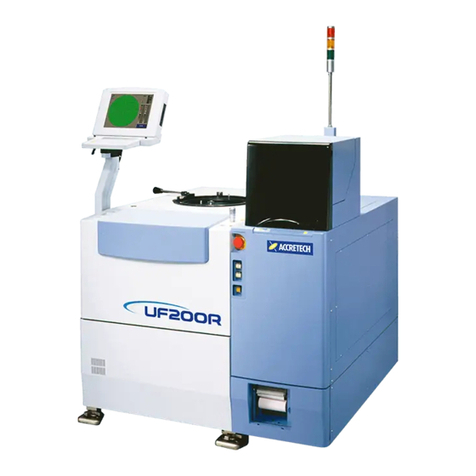
ACCRETECH
ACCRETECH UF200R user manual
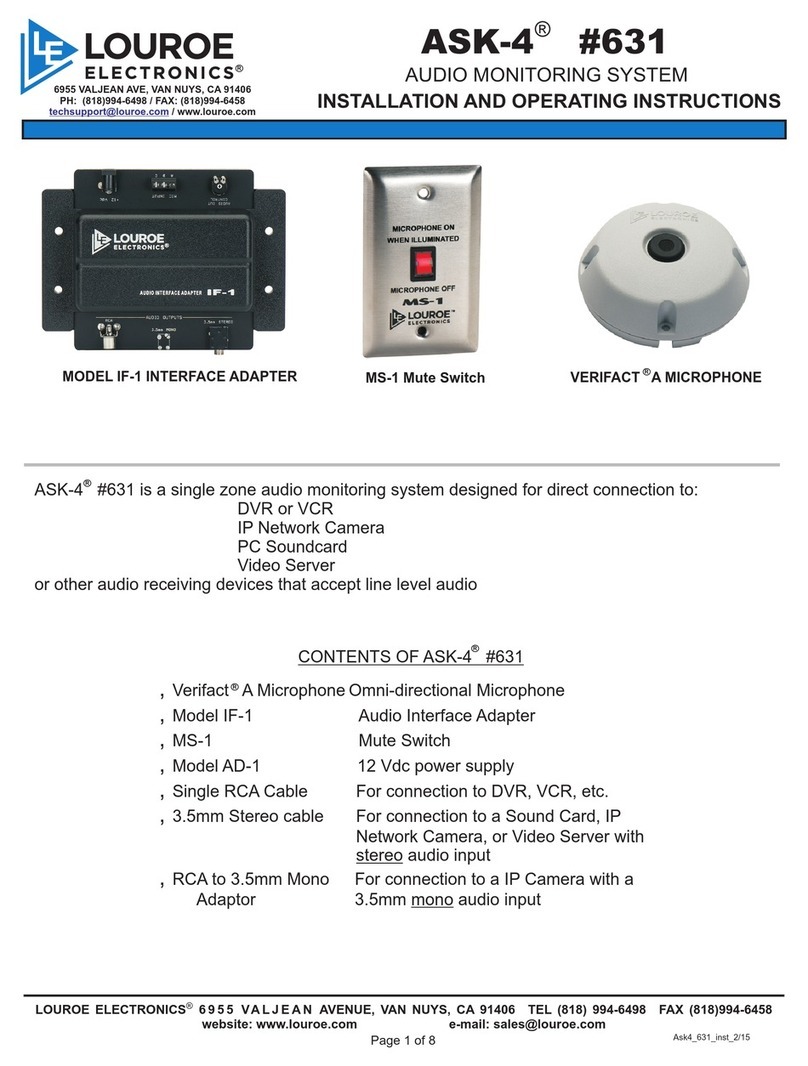
Louroe Electronics
Louroe Electronics ASK-4 Installation and operating instructions

Thommen
Thommen CM20 Installation and operating manual

Konica Minolta
Konica Minolta bizhub C3100i user guide
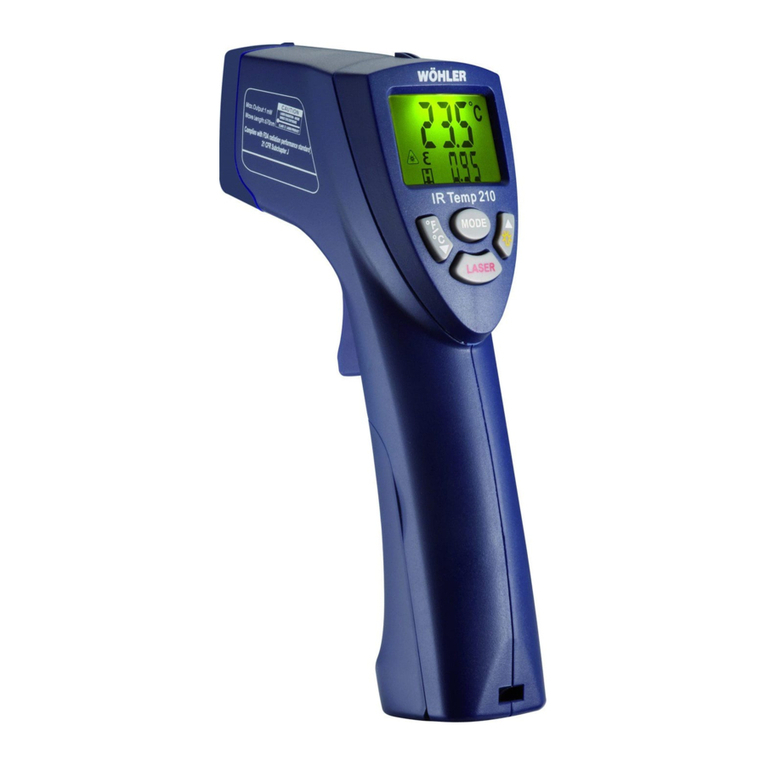
Wohler
Wohler IR Temp 210 manual

